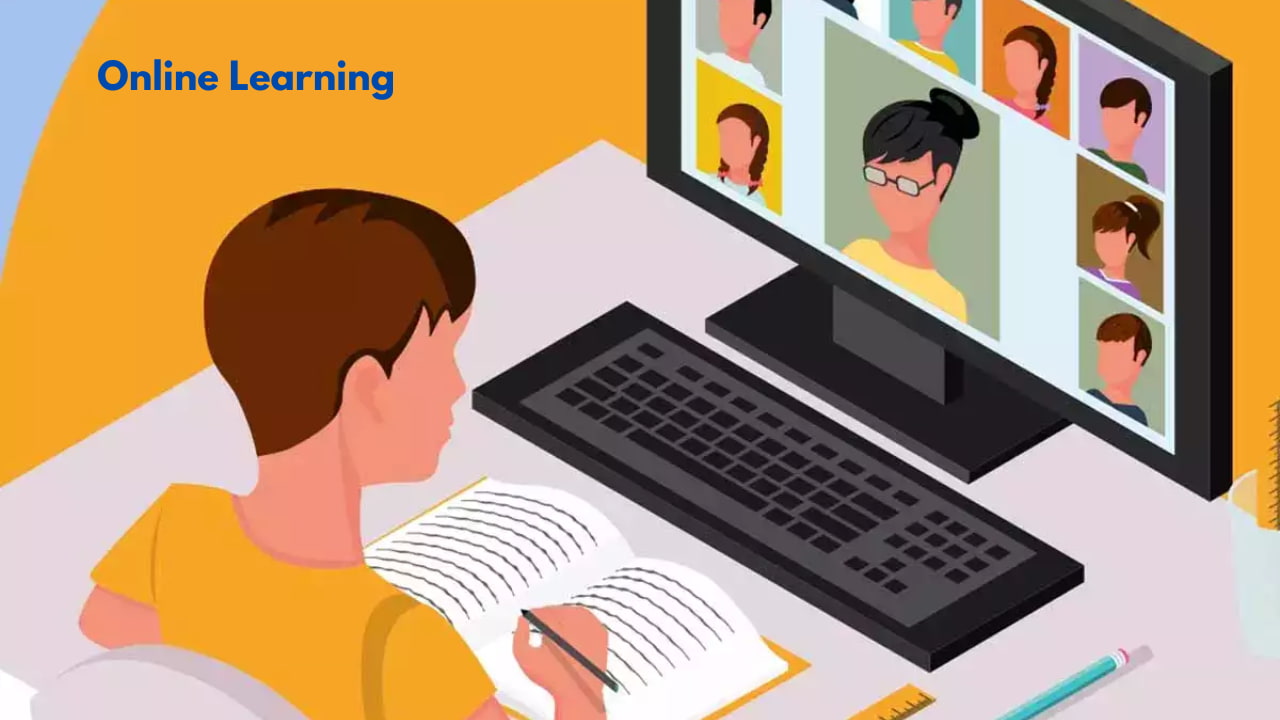The COVID-19 pandemic affected the entire world in many ways, and one of the biggest changes was in education. Schools and universities had to close, and students couldn’t attend classes in person. But thanks to the internet, learning didn’t stop! Online learning became the new way for students to continue their education.
After the pandemic, online learning has become even more popular and is now an important part of how students learn all over the world. Let’s explore how online learning has changed education and what it means for the future.
What is Online Learning?

Online learning is when students use the internet to attend classes, watch lessons, complete assignments, and take tests. Instead of going to a physical classroom, students can learn from home or anywhere else with a computer, tablet, or smartphone.
Online learning can be done through video lessons, virtual classrooms, or even educational apps that make learning fun and interactive.
How the Pandemic Made Online Learning Popular
Before the pandemic, most students went to school in person, and online learning was only used by a few people. But when the pandemic hit, schools had to close to keep everyone safe. Teachers and students quickly switched to online classes to continue learning.
Even though it was a new way of learning for many, both teachers and students adapted to the change. After the pandemic, many schools and universities realized that online learning had its own advantages, so they continued to use it.
The Benefits of Online Learning
Online learning has brought many positive changes to education. Here are some of the biggest benefits:
1. Learning from Anywhere
One of the best things about online learning is that students can learn from anywhere! They no longer need to be in a physical classroom. Whether they are at home, traveling, or in a different country, students can still attend classes and complete their schoolwork.
This flexibility has made education more accessible to students who live far away or cannot attend school in person.
2. Flexible Schedules
In online learning, students can sometimes choose when to study. Instead of following a strict timetable, they can study at their own pace. This is especially helpful for students who have other responsibilities or who need extra time to understand certain subjects.
For example, if a student learns better at night, they can watch lessons and do their homework later in the day.
3. Access to a World of Resources
With online learning, students can access a wide range of educational resources. This includes videos, articles, interactive quizzes, and even virtual field trips. Many of these resources are available for free on the internet.
Instead of just relying on textbooks, students can explore different learning materials to help them understand topics better.
4. More Personalized Learning
Online learning allows for personalized learning, meaning that students can focus on the subjects they find difficult and spend less time on the ones they already understand. There are many apps and platforms that adapt lessons based on the student’s level and progress.
This helps students learn at their own speed and makes education more tailored to their needs.
Challenges of Online Learning
While online learning has many benefits, it also has some challenges:
1. Lack of Face-to-Face Interaction
One of the biggest challenges of online learning is the lack of face-to-face interaction. Students may miss the experience of sitting in a classroom with their friends and interacting directly with their teachers.
Teachers also find it harder to monitor students’ progress and provide immediate help during online lessons.
2. Technology Issues
To participate in online learning, students need a good internet connection and a device like a computer or tablet. Some students may not have access to these resources, making it difficult for them to join online classes.
This can create a digital divide, where some students have better access to education than others.
3. Staying Focused
In a regular classroom, teachers can see if students are paying attention or if they need help. In online learning, students may find it harder to stay focused on their lessons, especially with distractions like social media or TV.
It requires more self-discipline to stay on track with online learning.
How Online Learning is Shaping the Future of Education
Even though schools have reopened after the pandemic, online learning is here to stay. Many schools and universities are now using a blended learning approach, which combines both online and in-person learning.
Here’s how online learning is shaping the future:
1. Blended Learning
Blended learning is a mix of online lessons and classroom teaching. For example, students may attend some classes in school but also complete assignments or watch videos online.
This method gives students the flexibility of online learning while still allowing them to enjoy the benefits of in-person interaction with teachers and classmates.
2. Access to Global Education
Online learning allows students to attend classes from anywhere in the world. This means that students in one country can attend lessons taught by teachers in another country, opening up global learning opportunities.
Many universities now offer online courses and degrees, allowing students to learn from top institutions without having to move or travel far.
3. More Independent Learning
With online learning, students take more control of their education. They learn how to manage their time, set goals, and study on their own. This encourages students to become more independent and responsible for their learning.